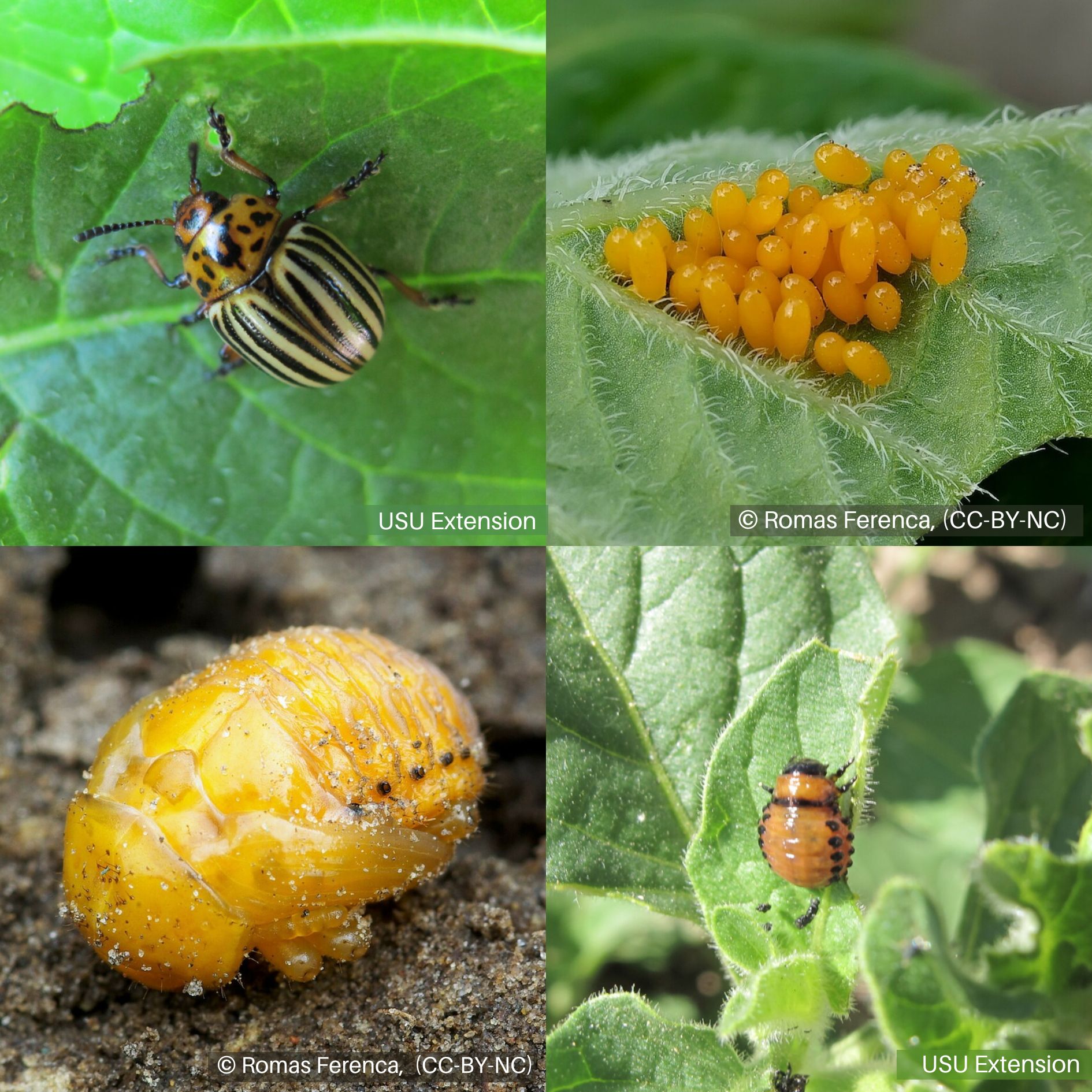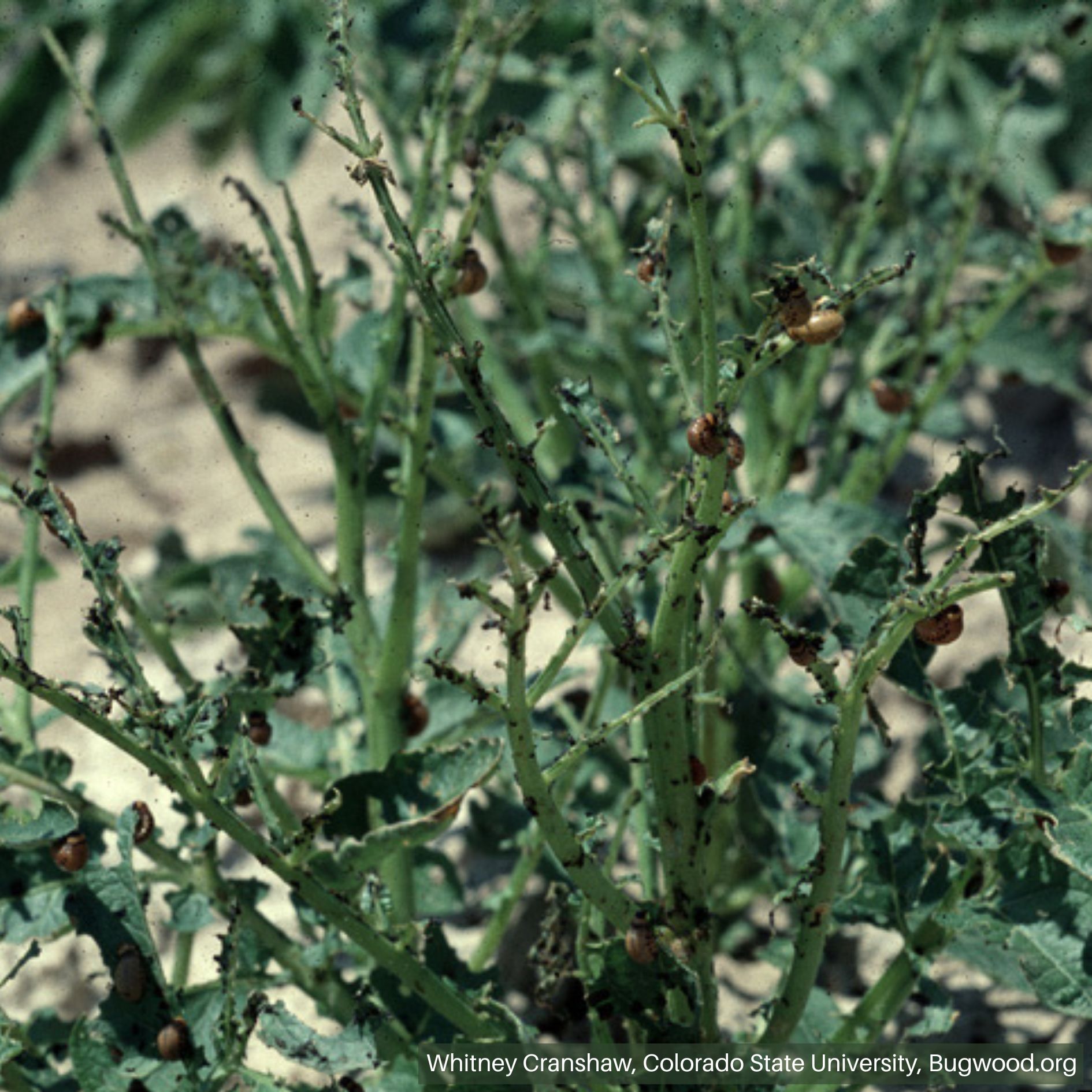Colorado Potato Beetle
 Colorado Potato Beetle Life Stages
Colorado Potato Beetle Life Stages
 Colorado Potato Beetle Larvae Feeding on Foliage
Colorado Potato Beetle Larvae Feeding on Foliage
HOSTS
- Eggplant
- Pepper
- Potato
- Tomato
DESCRIPTION
Adults are about the same size and shape as a lady beetle but with yellow and black stripes. Bright yellow to orange oval-shaped eggs are laid in clusters of about 20-45 on the undersides of leaves. Larvae are reddish in color with a bulbous-shaped body and two rows of black spots along the sides
BIOLOGY
Egg | Larva | Pupa | Adult
Colorado potato beetles have 2-3 generations per season and are a concern late April through potato vine-kill. Overwinter as adults under plant debris and in the soil. Adults emerge in approximately May. Larvae begin to feed on leaves in June and prefer tops of plants. Begin scouting in mid-spring for feeding damage or the presence of adults, eggs, or larvae.
SYMPTOMS
Adults and larvae feed with chewing mouthparts and can defoliate plants. Symptoms include notch wounds along the leaf margin, ragged injuries, and dark frass on foliage. Adults and larvae can cause great damage to potato foliage.
GENERAL MANAGEMENT
- Rotate crops to non-solanaceous crops
- Keep crop area free of solanaceous weeds
- Application of insecticides may be needed; resistance is common so rotate insecticide groups.
INSECTICIDES
Consider treatment when there is one adult or larva per plant early in the season or at tuber bulking/after flowering when there are an average of 1.5 large larvae or adults per plant. Click here to reference insecticide products.



